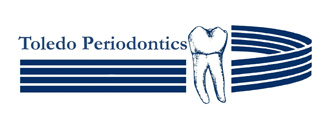Osseous Surgery
Osseous Surgery is a procedure perfomed as an adjuct, or addition, to periodontal flap surgery when bone has been lost and must be recontoured or added to the jaws. Surgical procedures are now available to help your body to regrow bone that has been lost to disease or injury. This procedure is safe and effective, and does not require bone grafting from another part of your body. Demineralized freezed-dried bone allograft (DFDBA) is bone taken from a bovine source and carefully sterilized and treated to be accepted as a framework for your own bone to grow upon. A Gortex membrane (which is a safe Teflon membrane), is placed between the bone graft and your tissues. This creates a space into which your body’s bone cells grow unimpeded. The result is new bone, which has been shown to be highly predictable in both animal and human studies.
Dr. Tohme has performed this surgical technique thousands of times with excellent success. If possible, we usually prefer to treat one side of the mouth at a time, which allows for more comfortable chewing and eating on the non-treated side during the healing phase.
“Periodontal Flap Surgery” or “Pocket Reduction Surgery” is a surgery which allows the periodontist to surgically open the gum tissues and have visible access to the infected areas. The mouth is thoroughly and gently numbed for this procedure to ensure your comfort. (If you have any concerns regarding dental anesthesia, please refer to our “Anesthesia” information under the “Patient Information” tab.) All plaque and calculus (tartar) can then be definitively removed from the root surfaces.
At this time, it is critical that bone or root irregularities be smoothed. If necessary, a bone graft is placed in the area of deficiency. This bone regeneration technique is used to improve esthetics, to rebuild bone in trauma cases, and to help stabilize dentures for patients who do not wish to have implants placed. Finally, any infected gum tissue can be removed and the gums are carefully stitched back into place.
You will be given post-op instructions regarding care of the treated area. Be sure to continue taking all medications as directed. Minor tenderness may be noted in the surgical area, and you may find it more comfortable to chew on the opposite side of the mouth for a few days. A short appointment will be scheduled to remove stitches and evaluate your healing in 7-10 days. Over the next few weeks, the tissue heals and your own bone cells are stimulated to create new, strong bone to stabilize and support your healthy smile.
After having gum disease that was treated by periodontal surgery, it is important to remember that more frequent dental cleanings are recommended. These cleanings are called “periodontal maintenance” and are a more complex procedure that will allow the hygienist to disrupt the bacteria above and below the gums.
The most recent research indicates that patients who maintain regular periodontal maintenance intervals (usually every 3 to 4 months) experience less attachment (bone) loss than patients who don’t. If undisturbed, bacteria will take approximately 9-11 weeks to recolonize. Once bacteria colonize, they are able to begin to infect and destroy the gums and bone around the teeth. Periodontal maintenance appointments at 12 week intervals allow the hygienist to remove and disrupt these harmful bacteria before they become destructive.
Ideally, we like to schedule an alternating appointment system, where you are seen twice a year at our office, and your general dentist sees you twice a year. We intensively focus on the health of your gums and bone, your homecare effectiveness and the effect of your periodontal health on your overall health.
